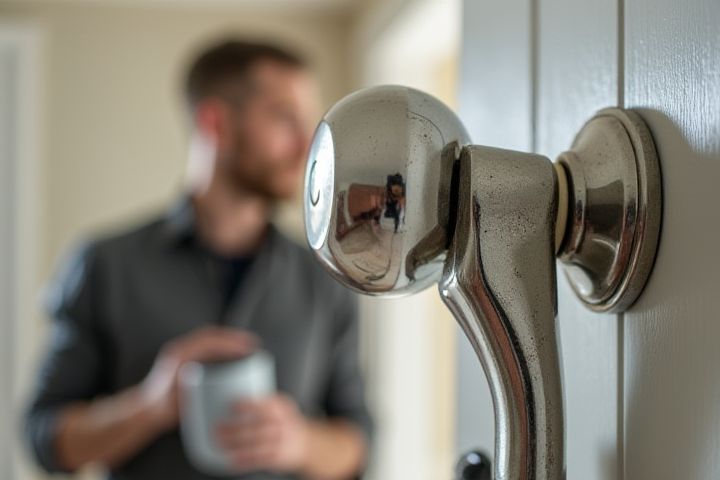
Inspecting a new house requires thorough attention to various critical components. Focus on structural integrity by examining the foundation, walls, and roof for any visible cracks or signs of water damage. Evaluate the plumbing system, checking for leaks, water pressure, and the condition of pipes, fixtures, and appliances. Pay close attention to the electrical system, ensuring all outlets, switches, and the circuit panel function properly and meet safety standards. Finally, assess the heating, ventilation, and air conditioning (HVAC) systems to confirm they are operational and well-maintained, as these aspects significantly affect your comfort and safety in the home.
What To Inspect In A New House
Structural integrity
When inspecting the structural integrity of a new house, assess the foundation for visible cracks or uneven settling. Check for proper alignment of walls and door frames, as misalignments may indicate shifting or potential structural issues. Roof conditions should be evaluated, looking for signs of sagging or deterioration, and inspect the attic for proper ventilation, which can affect overall stability. Finally, ensure that load-bearing elements, such as beams and columns, are sound and free of any damage or decay.
Roof condition
Inspecting the roof condition of a new house is crucial for understanding potential maintenance needs and longevity. Look for missing, damaged, or curled shingles, which can indicate wear or weather-related issues. Check for signs of leaks, such as water stains or mold in the attic, as these can reveal underlying problems that might not be visible from the exterior. Additionally, assess the gutters and downspouts for blockages or deterioration, as proper drainage is essential to protect the roof structure and prevent water damage.
Plumbing system
When inspecting the plumbing system of a new house, check for signs of leaks, such as water stains or mildew on walls and ceilings. Verify that all faucets, showers, and toilets function properly, and note the water pressure in each fixture. Inspect the condition of visible pipes for corrosion or wear, especially in areas like basements or crawl spaces. Make sure the water heater is up to code, with a capacity suitable for your household size, typically around 30 to 50 gallons for a family of four.
Electrical systems
When inspecting the electrical systems in a new house, first check the condition of the electrical panel, ensuring it meets current standards and can handle your power needs. Inspect the outlets and switches for proper installation, ensuring that GFCI outlets are present where necessary, especially in wet areas like kitchens and bathrooms. Verify that all wiring is up to code, checking for signs of fraying or improper connections, which can pose safety hazards. Lastly, ensure that smoke detectors and carbon monoxide detectors are installed and functioning correctly, as these systems are crucial for your safety and peace of mind.
HVAC performance
When inspecting a new house, emphasize the HVAC performance by checking the age and condition of the system, typically found in modern homes lasting 10 to 15 years. Ensure the system has proper airflow by examining ductwork for leaks or blockages, which can reduce efficiency by 20-30%. Verify that the thermostat is functioning accurately, potentially saving you up to 10% on energy bills with proper temperature settings. Look for regular maintenance records, as consistent servicing can enhance the longevity and performance of your HVAC system.
Foundation stability
Inspecting the foundation of a new house involves assessing several crucial factors. Look for visible cracks in the walls or floors, which may indicate underlying structural issues. Evaluate the grading around the foundation to ensure proper drainage away from the house, as poor drainage can lead to water damage. Additionally, check for signs of moisture or mold in the basement or crawl space, as dampness can compromise the integrity of the foundation over time.
Insulation and ventilation
Check the insulation levels in attics, walls, and basements to ensure they meet R-value standards for your climate, which typically range from R-30 to R-60 in attics. Inspect the quality and placement of weather stripping around doors and windows, which can significantly impact energy efficiency. Examine the ventilation systems, including exhaust fans in bathrooms and kitchens, to confirm they effectively remove moisture and pollutants, contributing to better indoor air quality. Consider the presence of whole-house fans or energy recovery ventilators that can enhance airflow, making your living space more comfortable while reducing heating and cooling costs.
Pest or termite infestation
Inspecting for pest or termite infestation in a new house is crucial to safeguard your investment. Look for signs of wood damage, such as hollow-sounding beams, small holes, or powdery substances near wooden structures, which indicate termite activity. Additionally, check for droppings or shed wings, common indicators of pest presence, particularly around windows and door frames. Be vigilant in examining basements and crawl spaces, as these areas often harbor moisture and wood-to-soil contact, making them prime environments for infestations.
Water damage or mold presence
Inspect the basement and crawl spaces for signs of water damage, such as discoloration on walls or ceilings, which could indicate previous leaks. Check for mold presence, particularly in corners, around windows, and in areas with poor ventilation, where moisture can accumulate. Pay attention to any musty odors, as they often signal hidden mold issues. Examine the plumbing for leaks and ensure that gutters and downspouts effectively divert water away from the foundation to prevent future water damage.
Appliances' operational status
Inspect the operational status of all major appliances, including the refrigerator, oven, dishwasher, washer, and dryer, for any signs of wear or malfunction. Check for proper connectivity, ensuring that each appliance powers on and functions correctly, including temperature settings and cycles. Pay attention to unusual noises, leaks, or error codes that may indicate underlying issues. Confirm that each appliance has been properly maintained, checking for receipts or documentation from previous owners, as this can impact your potential repair costs and overall investment.
